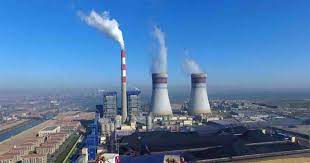POWERCHINA committed to take Pakistan forward for green and Sustainable Development

Islamabad: POWERCHINA has said that it was committed to take Pakistan forward for green and Sustainable Development.
POWERCHINA’s project ‘Diamer Basha Dam’ is Pakistan’s largest hydropower and expected to provide 18.1 billion kilowatt hour kilowatt hour (kWh) of clean electricity every year.
In a message, on the 10th Anniversary of CPEC, POWERCHINA said: “POWERCHINA is committed to bringing Pakistan forward for green and Sustainable Development.”
The project is expected to provide more than 20,000 job opportunities, which is considered one of the many positive effects of the project.

As one of the leading enterprises in China, POWERCHINA has carried out high-quality clean energy project construction and operation in accordance with international standards and is committed to improving Pakistan’s infrastructure conditions and alleviating local power shortages.
It has not only made important contributions to the sustainable development of Pakistan but also played a key role in the development of CPEC.
As one of the key enterprises participating in the construction of the CPEC, POWERCHINA has been active in various fields such as energy, electricity, water management, and infrastructure investment in Pakistan since it entered the Pakistani market as early as 1987.
Over the past 36 years, POWERCHINA has completed about 03 projects in Pakistan, including the first roller-compacted concrete (RCC) dam in Pakistan, the Gomal Zam Dam Multipurpose Project, the first mainstream hydropower station on the Indus River, the Ghazi-Barotha Hydropower Project, the largest installed hydropower station, the Tarbela 4rth & 5th Extension Hydropower Project, and the largest wind farm, the Tricon Boston 150 MW Wind Power Project.
In the past ten years, among the first 20 energy and infrastructure projects of the China-Pakistan Economic Corridor (CPEC), POWERCHINA has participated in the investment and construction of 11 projects.
POWERCHINA has consolidated the traditional power business and continued to contribute to the development of new energy and other fields.





